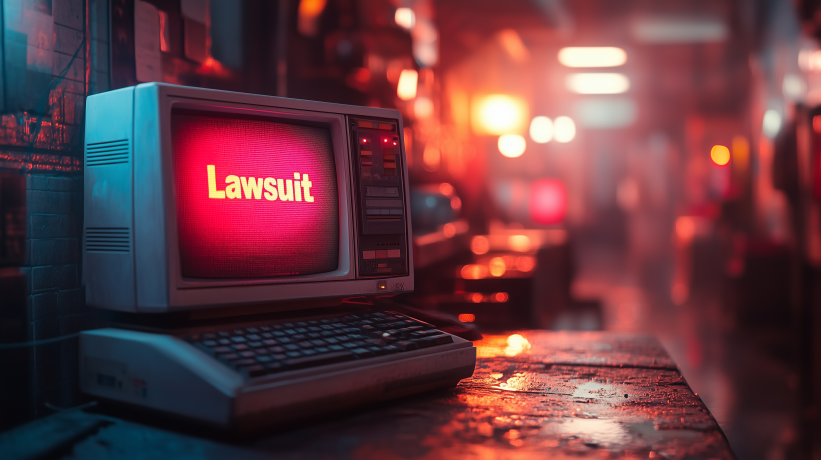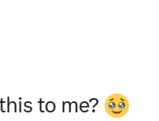
CrowdStrike faces a high-stakes securities fraud lawsuit alleging misrepresentations about its Falcon software reliability. Investors claim concealed risks led to a massive outage, exposing the company to significant legal and financial consequences.
by LawInc Staff
August 1, 2024
On July 30, 2024, a securities class action lawsuit was filed against CrowdStrike Holdings, Inc. and two of its top executives in federal court in Texas. The case alleges the cybersecurity company misled investors about the reliability of its flagship Falcon security software, leading to a stock price plunge when the truth emerged. Here’s a breakdown of the key claims and issues in the suit.
1. Understand the Basic Allegations
-
- Proposed Class Period: November 29, 2023 to July 29, 2024
- Defendants: CrowdStrike Holdings, Inc., CEO George Kurtz, CFO Burt Podbere
- Lead Plaintiff: Plymouth County Retirement Association (on behalf of similarly situated shareholders)
- Core Accusation: Defendants made false statements touting the efficacy of CrowdStrike’s Falcon platform while concealing deficient update testing procedures that risked major customer outages.
- Alleged Motive: To artificially inflate CrowdStrike’s stock price during the Class Period.
Key Lawsuit Lingo Explained
-
- Securities Fraud: Deceiving investors about a company to manipulate its stock price.
- Class Action: A lawsuit filed on behalf of a group people that have been similarly harmed.
- Lead Plaintiff: A representative of the “class” who oversees the litigation for the group.
- Class Period: The time frame in which the alleged fraud occurred.
- Complaint: The initial court filing which outlines the plaintiff’s allegations and legal claims.
2. Explore CrowdStrike’s Alleged Misrepresentations
-
- “Validated, Tested and Certified”: CrowdStrike execs touted the Falcon software as extensively vetted for effectiveness.
- “Drumbeat of Innovation”: Defendants highlighted a steady stream of cutting-edge product updates and security advances.
- Cutting-Edge AI: Leadership claimed machine learning made Falcon uniquely able to adapt and prevent evolving threats.
- Frictionless Deployment: Customers were assured rollout of Falcon was easy and seamless across endpoints.
- “Execution and Discipline”: Execs underscored CrowdStrike’s operational excellence across the business.
What Makes a Statement Misleading?
-
- Half-Truths: Making a claim that’s technically true but omits critical contrary facts.
- Unfounded Puffery: Exaggerations about a company’s products so overblown no reasonable investor would rely on them.
- Misrepresentations: Stating something as fact that is objectively untrue.
- Concealment: Failing to share information that would be important to investors in evaluating a company.
- Context: Truthful statements may still mislead if important situational details are omitted.
3. Grasp the Alleged Truth Behind the Hype
-
- Deficient Update Testing: The lawsuit claims CrowdStrike failed to properly test Falcon updates before rollout to customers.
- Major Outage Risk Concealed: This allegedly created an undisclosed risk of massive customer security outages and business interruptions.
- Reputational & Legal Jeopardy: Outages could subject CrowdStrike to immense reputational damage and liability, the suit contends.
- Materialized Threat: These risks came to pass in the July 2024 update crash impacting millions of Microsoft users.
- Evidence Emerges: Post-outage expert commentary and CrowdStrike’s own remedial measures suggested its testing was subpar.
FAQ: Proving Securities Fraud
-
- Q: Do you have to show the company intended to defraud investors?
A: No, even reckless disregard for the truth can suffice – the company can’t bury its head in the sand. - Q: Is it enough to prove a statement was false?
A: No, you must also show the falsehood was “material” – significant enough that a reasonable investor would consider it important. - Q: What if the company’s misstatements were just overly optimistic projections?
A: Forward-looking statements are often protected if accompanied by meaningful cautionary language – generalized positive puffery usually isn’t actionable. - Q: How is the alleged fraud proven to have actually caused the plaintiffs’ losses?
A: A clear link is needed between the misrepresentations and an eventual corrective disclosure that deflated the stock price once the truth emerged. - Q: What if fraud is established but the losses also stem from other market forces?
A: A statistical analysis is often needed to isolate company-specific harm from broader industry or economic downturns.
- Q: Do you have to show the company intended to defraud investors?
4. Follow the Fallout as Truth Emerges
-
- “The CrowdStrike Outage”: Flawed Falcon update crashed millions of Microsoft devices starting July 19, 2024.
- Massive Customer Impacts: Banks, hospitals, airlines, 911 centers and more faced major disruptions; planes grounded, operations halted.
- Hacking Vulnerability: CrowdStrike warned the outage left impacted customers exposed to potential cyberattacks.
- Stock Price Plummets: CrowdStrike shares dropped 11% when the outage news first broke.
- Congressional Inquiry: CEO Kurtz called to testify about the incident as CrowdStrike faces mounting scrutiny.
Examples of Reputational & Legal Fallout Alleged
-
- Major customers like Delta Airlines hired top attorneys to pursue significant damages from CrowdStrike over business interruptions.
- Security analysts downgraded CrowdStrike’s stock and questioned management’s credibility in light of revelations.
- Employees spoke of a “crisis of confidence” in CrowdStrike’s technology and executives’ ability to deliver on promises.
- Industry and government officials lambasted CrowdStrike in the press and political hearings, eroding public trust in the company.
- Competing cybersecurity firms highlighted CrowdStrike’s stumble to try to poach its clients and market share.
5. Uncover the Basis for Damages Alleged
-
- Stock Drop Losses: Class members contend they paid artificially inflated prices for CrowdStrike shares before the fraud was revealed.
- Corrective Disclosures: Plaintiff traces 35% decline in CrowdStrike stock to news of the outage and company’s deficient practices emerging.
- Reputational Harm: Severe damage to CrowdStrike’s industry standing and customer trust depressed its business prospects and outlook.
- Looming Liability: CrowdStrike faces massive potential legal exposure from customer lawsuits and regulatory probes.
- Erosion of Competitive Edge: Incident undermines key selling points of CrowdStrike’s products vs. rival platforms.
How Securities Damages Are Calculated
-
- Out-of-Pocket Losses: The traditional measure looks at extra amount class members overpaid for their shares based on the alleged inflation.
- Event Study Analysis: Statistical experts isolate the fraud-related vs. innocent causes of a stock drop following corrective disclosures.
- Proportional Liability: Where multiple negative events contribute to losses, damages are discounted by defendants’ percentage of responsibility.
- Valuation Multiples: Declines in key financial metrics like revenue or earnings forecasts are translated into lost market capitalization.
- Dueling Experts: Plaintiffs’ and defendants’ economists present competing damages models for the jury or judge to assess.
The Bottom Line for Investors

CrowdStrike’s stock price plummeted in the weeks following revelations about the Falcon security software update debacle and its costly customer impacts in July 2024.
The CrowdStrike securities class action presents a cautionary tale about the risks of believing even a prominent tech company’s hype without verifying the reality behind the marketing. For investors, some key takeaways include:
Grandiose claims about a company’s products or performance capabilities warrant close scrutiny and skepticism, as they may gloss over concealed problems that could eventually implode a stock’s value. Likewise, even vague, generalized risk disclosures may be worth taking more seriously as warning signs than mere boilerplate legalese.
Particularly with a cybersecurity provider like CrowdStrike, outages and reputational damage can have an outsized impact if trust in the core product is undermined. While no company is immune from operational hiccups, how they prepare for and respond to crises can make or break investor confidence.
If suspicions of potential securities fraud arise, impacted investors should monitor for further developments that could strengthen a claim, mitigate damages by reassessing their position, and consider contacting an experienced securities attorney for guidance. While many suits settle, litigating a strong case against deep-pocketed defendants is often a lengthy, expensive, and uncertain process.
Test Your CrowdStrike Lawsuit Knowledge
Questions: Early Case Stages & Allegations
-
- 1. When was the initial complaint against CrowdStrike filed?
- A) May 2024
- B) July 2024
- C) September 2024
- D) November 2024
- 2. Which of the following is NOT a claim made in the lawsuit?
- A) CrowdStrike failed to properly test Falcon updates
- B) Executives concealed risks of customer security outages
- C) The Falcon platform was falsely touted as “military grade”
- D) Leadership downplayed potential legal liability from crashes
- 3. What are the two securities laws CrowdStrike allegedly violated?
- A) Securities Act of 1933 & 1934
- B) Sections 11 and 12 of the ’33 Act
- C) Sections 10(b) and 20(a) of the ’34 Act
- D) Regulation FD and Rule 10b5-1
- 4. In what court was the class action complaint filed?
- A) Delaware Court of Chancery
- B) New York Supreme Court
- C) U.S. District Court for the Northern District of California
- D) U.S. District Court for the Western District of Texas
- 5. What type of plaintiff is leading the proposed class?
- A) Individual investor
- B) Institutional investor
- C) CrowdStrike competitor
- D) State Attorney General
- 1. When was the initial complaint against CrowdStrike filed?
Answers: Early Case Stages & Allegations
-
- 1. B) The initial class action complaint against CrowdStrike was filed in July 2024.
- 2. C) While the complaint alleges CrowdStrike misled investors, it does not specifically claim Falcon was marketed as “military grade.”
- 3. C) The lawsuit asserts violations of Sections 10(b) and 20(a) of the Securities Exchange Act of 1934.
- 4. D) The class action was filed where CrowdStrike is headquartered (in the U.S. District Court for the Western District of Texas).
- 5. B) The Lead Plaintiff is Plymouth County Retirement Association, an institutional investor, suing on behalf of similarly situated shareholders.
Questions: Revelation of the Alleged Fraud
-
- 1. When did the alleged “CrowdStrike Outage” customer crash event occur?
- A) March 10, 2024
- B) May 22, 2024
- C) July 19, 2024
- D) September 4, 2024
- 2. How many Microsoft Windows devices were allegedly impacted by the Falcon update crash?
- A) 500,000
- B) 2.3 million
- C) 8.5 million
- D) 14.1 million
- 3. Which of these was NOT cited as evidence CrowdStrike’s update testing was deficient?
- A) Expert commentary critiquing practices post-outage
- B) Lack of rollback plan to address failed updates
- C) Former employee whistleblower complaint
- D) Remedial measures announced by CrowdStrike
- 4. By what percentage did CrowdStrike shares fall immediately after the outage news broke?
- A) 4%
- B) 11%
- C) 17%
- D) 25%
- 5. What other damaging revelation occurred soon after the initial crash was reported?
- A) SEC launched a formal investigation
- B) Executives dumped millions in stock
- C) Congress called CEO to testify about incident
- D) FTC filed antitrust lawsuit against CrowdStrike
- 1. When did the alleged “CrowdStrike Outage” customer crash event occur?
Answers: Revelation of the Alleged Fraud
-
- 1. C) The widespread CrowdStrike customer outage allegedly started on July 19, 2024 after a flawed Falcon software update was deployed.
- 2. C) Court filings indicate approximately 8.5 million Microsoft Windows devices were impacted by the failed security update.
- 3. C) While expert commentary and CrowdStrike’s own corrective actions suggested poor testing, no employee whistleblower is mentioned in the initial complaint.
- 4. B) CrowdStrike’s stock price fell 11% immediately after news of the outage first emerged, according to the lawsuit.
- 5. C) In the days following the crash revelations, Congress reportedly summoned CrowdStrike’s CEO to testify about the incident.
Disclaimer
The legal analysis provided in this article discussing the CrowdStrike securities class action lawsuit is for general informational and educational purposes only.
The details of the case are still developing and the allegations against CrowdStrike have not yet been proven in court. Class members or interested parties should consult with a qualified securities litigation attorney to assess their own potential rights and remedies.
While based on a synthesis of factual allegations drawn directly from the initial complaint and contemporaneous news reports, this article also contains informed analysis and opinion that may differ from the ultimate findings of the court as the case progresses.
Need Legal Help?
If you need legal assistance, in any field of law, our free concierge service can connect you with experienced attorneys in any practice area and state. Contact us to learn more.
Also See
Ticket Takedown: DC Sues StubHub for Deceptive Pricing Practices
Boar’s Head Listeria Lawsuit: A Fight for Justice and Food Safety










